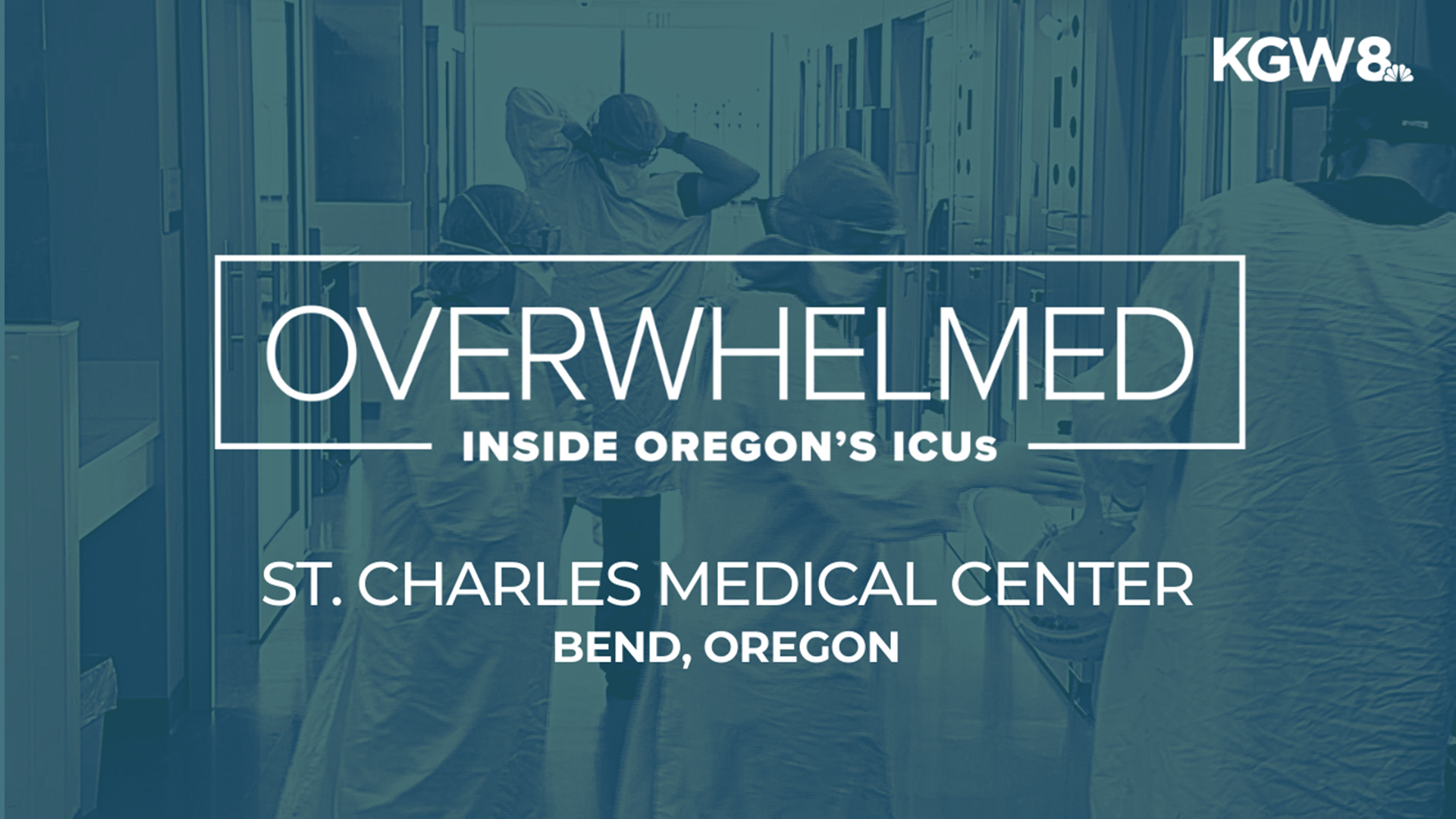BEND, Ore — Oregon's hospitals are in crisis. Beds are filled with COVID-19 patients — more than ever before, and nearly all of them are unvaccinated. Health care workers are sounding the alarm that the current situation is untenable but still forecasted to get worse.
This story is part of a special KGW series, Overwhelmed: Inside Oregon's ICUs.
For the first time since the pandemic began, our crews were granted access to ICUs at two Oregon hospitals to see the severity of what doctors and nurses are dealing with every day. A warning to readers: this story and video discusses difficult topics, including death.
"We have nothing left to give"
Inside St. Charles Medical Center in Bend, behind a locked entry on the first floor, sliding doors seal off glass-walled rooms with a single bed inside.
This is the intensive care unit where the area's sickest patients receive care.
On Tuesday, Aug. 17, nine ICU beds hold COVID-19 patients, each connected to various wires and tubes; machines near their head silently display numbers and charts that let doctors and nurses know how they're doing.
On this day, things are not going well for three patients. One in particular, a woman in her 50s, will not live much longer.
“This patient is trying to die right now. We’re trying to get ahold of family to let them know transitions are happening,” said Monica Schulz, the nurse who manages this ICU.
The medical professionals here are the patients' best and often last hope.
“The patient is still a full code, so we are going to continue to do everything. But the unfortunate thing is we have nothing left to give. They’re 100% oxygen, they’re fully supported on the ventilator and it’s all oxygen-related. There’s nothing else we can do, so we’re trying to get the family to come in or make them a do-not-resuscitate [order],” said Schulz.
A respiratory therapist uses the bag-valve mask attached to the patient’s mouth to increase oxygen saturation levels. He slowly squeezes the bag, then lets it fill with oxygen and squeezes again.
“There’s about a 20% mortality rate in most ICUs on any given day,” said Schulz. “But with COVID it's been much higher than that. Again, it’s all unnecessary and preventable. That’s the heartbreaking part."

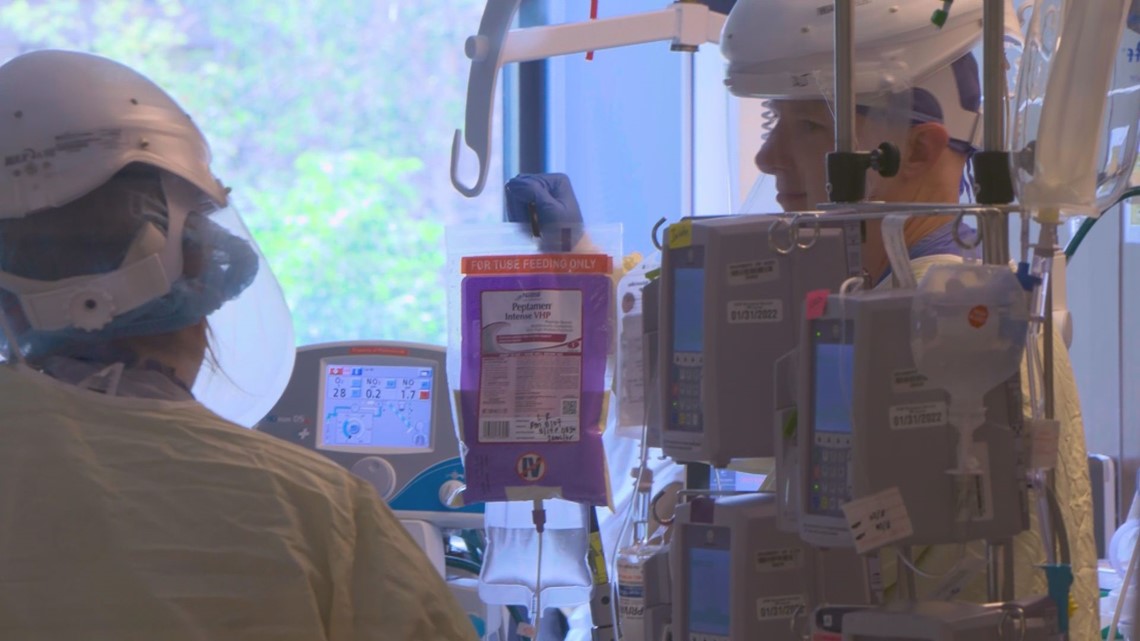
"How can I give my heart when they don’t seem to care?"
Among staff who've been working the frontlines from the beginning, there is now a profound sadness and frustration that none of this needs to be happening. The vaccines against COVID-19 are extremely effective at keeping people out of the hospital, but people are still choosing not to get vaccinated.
Roughly 90% of people who end up at St. Charles with COVID-19 are not vaccinated.
“Staff are saying, 'I don’t even have compassion anymore,'” said Schulz. “I want to have compassion but it’s hard when people are making choices that are causing them to die. How can I give my heart when they don’t seem to care? It's very challenging. They put their game faces on when they show up at the door but conversations in the break room and outside of work are heart-wrenching."
The few hospitalized patients who are vaccinated typically have multiple underlying health conditions. Some are on medications that suppress their immune system because of other conditions like organ transplants or autoimmune disorders.
The health care professionals here have seen COVID-19 trigger devastating responses in patients' bodies, responses that too often end up killing them.
Since the pandemic began, more than 100 people have died at St. Charles with COVID-related symptoms, according to Dr. Doug Merrill, the assistant chief medical officer for St. Charles Hospitals.

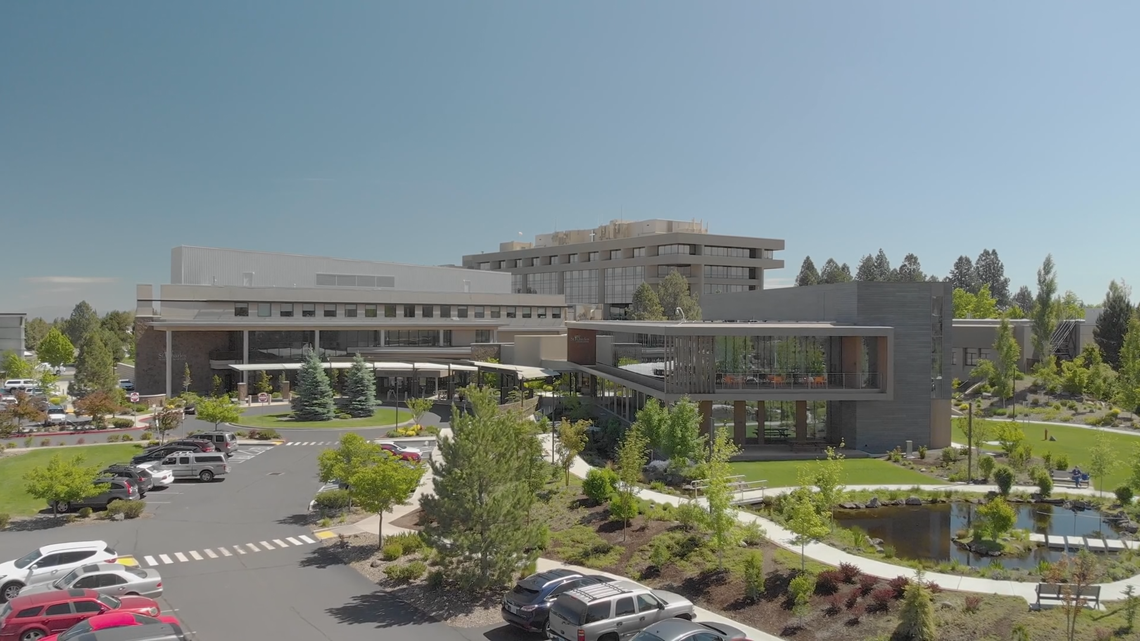
Few options left
Dr. Louis Davignon, the attending critical care pulmonary physician on this day, said once patients end up in the ICU, treatment options are limited.
The few things that could help aren't always available, like a drug called Tocilizumab, given emergency approval by the FDA June 24. The drug was shown in clinical trials to reduce inflammation in the body often caused by the coronavirus, but a surge in patients nationally means the medication is in short supply.
“There’s a national shortage right now of tocilizumab so we can’t get that. A lot of these patients that would have gotten that medication earlier, it’s not available right now. We have calls out. There’s medications that we’d like to give that we can’t give because the national surge in patients and the demands on the medications,” said Dr. Davignon.
One treatment that does seem to help improve oxygen levels is rolling patients from their back to their stomach. It's called "going prone," and it is a delicate procedure.

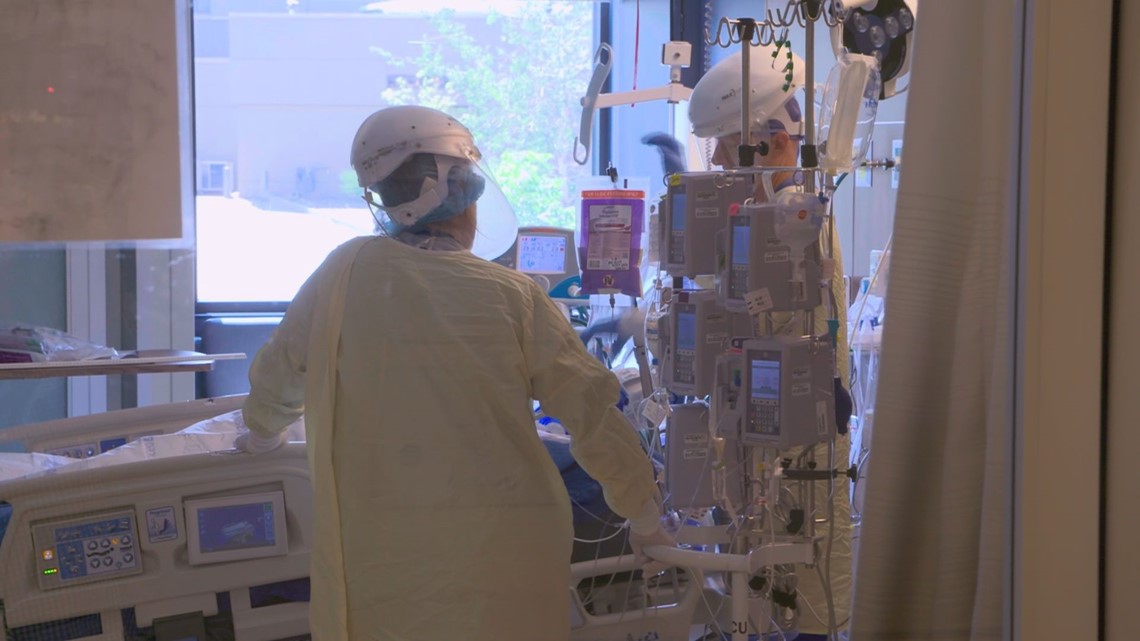
“Because they’re intubated, the breathing tube is the place where we have to be very careful about how we do that so we don’t dislodge the airway. These patients are in such distress that if we dislodge that airway, they could die just from that transition,” said Schulz.
Before they begin, four nurses put on yellow disposable robes as they begin to layer up to protect themselves from the virus living in the patient’s body. A special helmet and mask the nurses wear, called a CAPR, sucks air into a filter at the top of the helmet using a battery powered fan, then distributes the clean air down into the face mask, which seals in front of the ears.
“Everybody’s got to get all their gear on,” said Schulz. “You’ll see some are using a N95 [mask] and goggles. Others are using the CAPR shields and masks, which are a positive pressure mask blowing everything out so they don’t get anything in. And they gown and double glove, just so that if they rip a glove they’re not exposed. And they always check each other to make sure everything is as it should be before they go in. That way nobody risks contamination,” she said.


It's an intensive and time-consuming task. The patient being proned is limp and does not respond to the team’s presence.
That is intentional.
“No, they are not aware at all. They are sedated and paralyzed if we are doing this, so we have absolute control and they can’t fight us to turn and possibly dislodge their airway,” she said.
"It doesn't matter whether or not you believe"
Kristi Mekkers, a nurse helping prone the patient, has 11 years of experience and was working on her day off because the ICU is short-staffed. After the procedure, she walks out of the room and begins peeling off protective layers.
“The helmets, you can’t hear because the air comes right out. And the masks and the goggles, they get a little claustrophobic and you can’t see, so it’s hard,” she said.
Like many working the ICU, Mekkers is frustrated over those who refuse to believe COVID is real — and dangerous.
“For the people that don’t believe, it doesn’t matter whether or not you believe. The reality is, what we’re doing to somebody to help them live — it’s still happening. They have all the tubes, all the lines, all the full support and everything we can do — and whether you believe COVID is real? That person’s real sick,” she said, pointing to the room where the gravely ill patient is now lying on their stomach.
The nurse has a bit more patience for those who have delayed getting the vaccine. She too waited to get her shots, but chose to get vaccinated.
“My reason was I got attacked in a room by a COVID-positive patient and my mask was torn. That was not fun, was not comfortable. I got my vaccine right away, right after that. I waited a little bit though, ‘cause I understand. It’s a little bit scary,” she said.
“But I don’t really care why people don’t have it anymore. I just feel bad that – we’re doing our best, but... We’re doing everything we can, and it doesn’t really follow a great path anymore. It’s not just elderly populations, it’s not just young people. It’s not people with comorbidities. It’s me, you, anybody!”

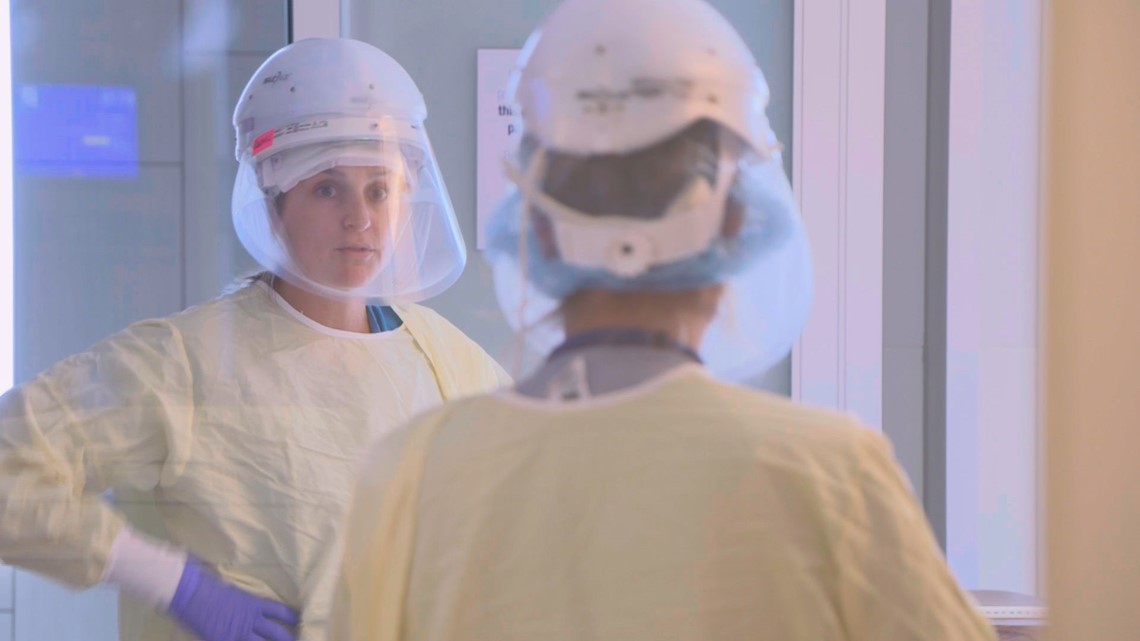
Emergency room nurse Jose Pacheco has dealt with several patients who refuse to believe the virus is dangerous or even real.
“A lot of them are still dead set on their beliefs and their opinions. If there is any exchange when you try to educate, you’re gonna get some negative feedback," he said.
There are others who are not vaccinated but are still open to dialogue.
“I’ve been fortunate enough to be able to approach some of the patients and explain to them everything we do here is science and facts, and that’s it. We’re coming from a place where we want to help. We don’t want to push our beliefs,” Pacheco said.
Some of the unvaccinated have a change of heart.
“I actually have a patient today that she reached out to everybody she knew to say 'this is no joke, please go get the vaccine,'” said Pacheco.
The emotional toll
Across the ICU, an older man suffering with COVID is not doing well. An elderly woman in a wheelchair is gently pushed up to the glass for what might be a final goodbye. A nurse comforts her as she begins to sob.
ICU manager Monica Schulz walks over to another nurse who holds an iPad, the only way families can be near their loved one in the final moments. Only one person is allowed into the ICU when COVID-19 is involved, and even that family member is not allowed in the room.
Nurse Peggy Vanderzanden is caring for the patient. Each one takes an emotional toll.
“We think they might be getting a little bit better, and then — like my patient today suddenly got totally worse. We’re doing everything we can and I don’t know if it’s going to be enough,” she said.
Vanderzanden wishes she could tell everyone who has held off on getting the vaccine what it is like to end up in the ICU.
“Your reasons for not getting it are probably nothing compared to what it would be like if you do get it, and going through this,” she said.
As a nurse with years of experience, she is not new to seeing patients die. But now they are dying more often, she said. It can be emotionally exhausting.
“Especially with this delta variant. A lot of our patients aren’t making it. They’re here for weeks, they’re intubated. But there’s not much we can do,” she said.
"We're in trouble"
Outside the ICU, COVID-19 has changed many parts of St. Charles Medical Center and its sister hospitals in Redmond, Madras and Prineville. St. Charles Bend is a Level 2 trauma hospital, which normally would mean it handles all but the most complicated medical issues. The only Level 1 trauma hospitals in Oregon are Oregon Health & Science University (OHSU) and Legacy Emanuel, both in Portland.
Dr. Doug Merrill, Chief Medical Officer for St. Charles Bend and Redmond Medical Centers, said because of COVID, the hospitals are now mainly available for emergencies only.
As of Tuesday, Aug. 17, St. Charles had 61 total COVID-19 patients, the most ever. Because those patients require critical care, patients who are only slightly less sick — people who need surgery for cancer, heart conditions or other needs — must be put on hold. Since most of those surgeries would require an overnight stay to recover, they have slowed considerably. Dr. Merrill said in normal times the hospital would perform as many as 30 elective surgeries a day where the patient stays overnight to recover. Now, because so few beds are available, surgeons do just five elective in patient surgeries a day.
“We are completely packed. We have not been able to provide surgical care to patients for many months,” Dr. Merrill said.


Emergency department doctor Gillian Salton said she ruminates about those who quietly suffer in the community because there is no room in the hospital.
“What keeps me up at night are the patients who aren’t getting their surgery for their colon cancer because we’re full of COVID patients," Dr. Salton said. "That’s what I lie awake thinking about every night. I think about the patients that I am discharging from the emergency department who normally would be admitted to the hospital but I’ve got no place to put them so we say 'just go home and hope you don’t die.'”
She clarified that doctors do tell patients to return if they get sicker, but the message is clear: COVID’s impact ripples far beyond those who get sick with the virus.
The other issue is a lack of nurses. St. Charles has 161 nursing openings, but, like many others nationwide, cannot find nurses to take those positions. Some days the hospital has beds that no one is using, but they cannot made available because there are no nurses to care for the patient who would be in that bed.
“We know that there are people out in the community that have died because they haven’t been able to get this care,” he said. “It’s already happening and I’m very worried that it's going to continue to get worse."
Part of his concern is based on COVID-19 test positivity rates for the three counties that surround St. Charles. Dr. Merrill said anything above 10% shows a spike in COVID-19 cases is coming. The hospital’s data scientist reported on Aug. 17 that test positivity rates for the surrounding counties were “incredibly high.”
He found Crook County had a positivity rate of 23.8%, Deschutes County had a rate of 16.8% and Jefferson County, 16.2%.
“We’re in trouble. We’re in trouble like every other hospital in Oregon,” Dr. Merrill said.
RELATED: Oregon K-12 school staff and health care workers required to get vaccinated against COVID-19
Outside the hospital’s emergency room, a handful of people sit on benches along the sidewalk near the door. They're here because they're sick, but no one is allowed inside until a triage nurse in full protective gear can come out and check them over to determine whether they have COVID-19.
“What we learned early on in the pandemic from other hospitals is that you had to keep separation with your potentially infectious patients, or your emergency department waiting room became the source of COVID for your community,” said Michelle Brenholdt, the director of emergency services for St. Charles Medical Centers in Bend and Redmond.

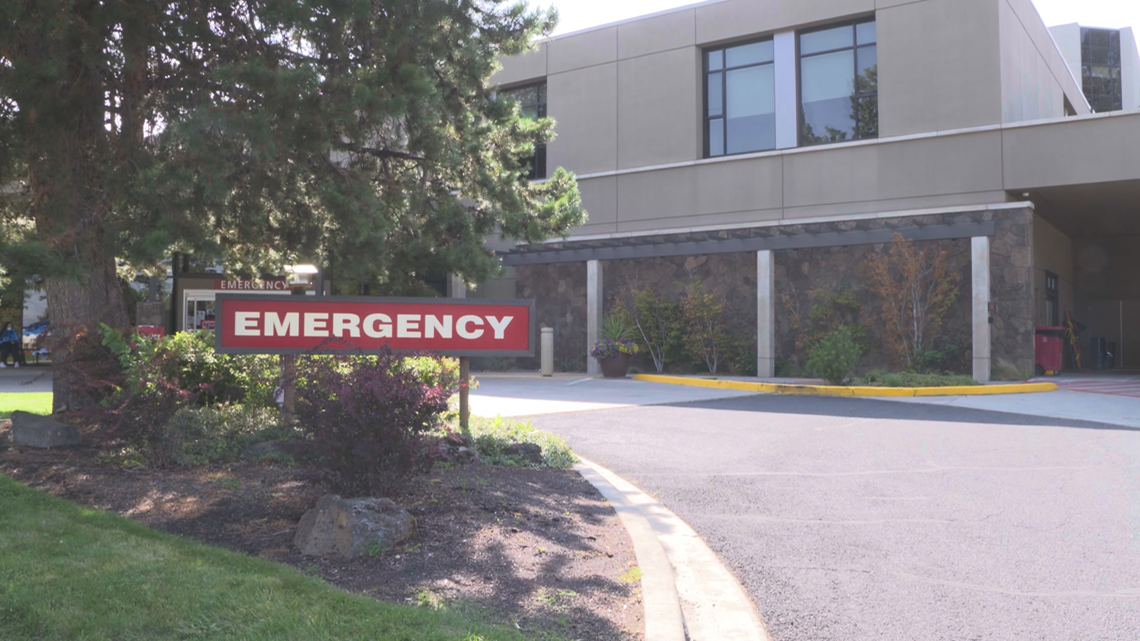
If patients are found to likely be infected with the virus, they are led into the emergency room through a separate door and put immediately into a room to limit the exposure of others.
Jacquie Bass is a triage nurse who talks to those waiting outside. She worries about all the patients arriving at the hospital.
“It’s extremely scary because you have multiple people coming in multiple times. When you have limited resources and limited bed space — who goes next and who goes first? It’s extremely frightening for the community and for us.”
Anger and frustration
As the fifth wave of infections continues to grow, fueled by the dangerous delta variant, some on the front lines feel exhausted and discouraged.
“I’ve been doing this job for 20 years and I’ve never been in this mental state about my job. I’ve never been angry before at work,” said ER doctor Gillian Salton.
A year and a half into the pandemic, things are not getting better. It eats at many health care professionals.
“I’m angry at everything. I’m angry at patients who chose not to get vaccinated. I’m angry at the health system for not being able to handle it, even if it’s not their fault. I’m angry at myself for not having done more early in the pandemic,” said Dr. Salton.
She admits being angry at herself for feeling angry.
“Yes. Very much so. It’s hard,” she said.
Fellow emergency department doctor Suzanne DeMeester understands the feeling.
“I think everyone in emergency medicine is increasingly frustrated. We’re seeing something that could have been prevented. We’re seeing people getting really sick. We’re seeing people dying. We’re just really frustrated because it’s hard for us to help them at this point,” Dr. DeMeester said.
She remains astounded that some refuse to get vaccinated.
“To me the vaccine was honestly one of the happiest days of my life, after getting married and having kids. It was such a relief and I saw a light at the end of the tunnel," Dr. DeMeester said. "It was just really shocking to me and everyone in the emergency community that people have been so resistant to something that could have really stopped this pandemic and really reset our country."
Instead, the COVID-19 patients keep coming.

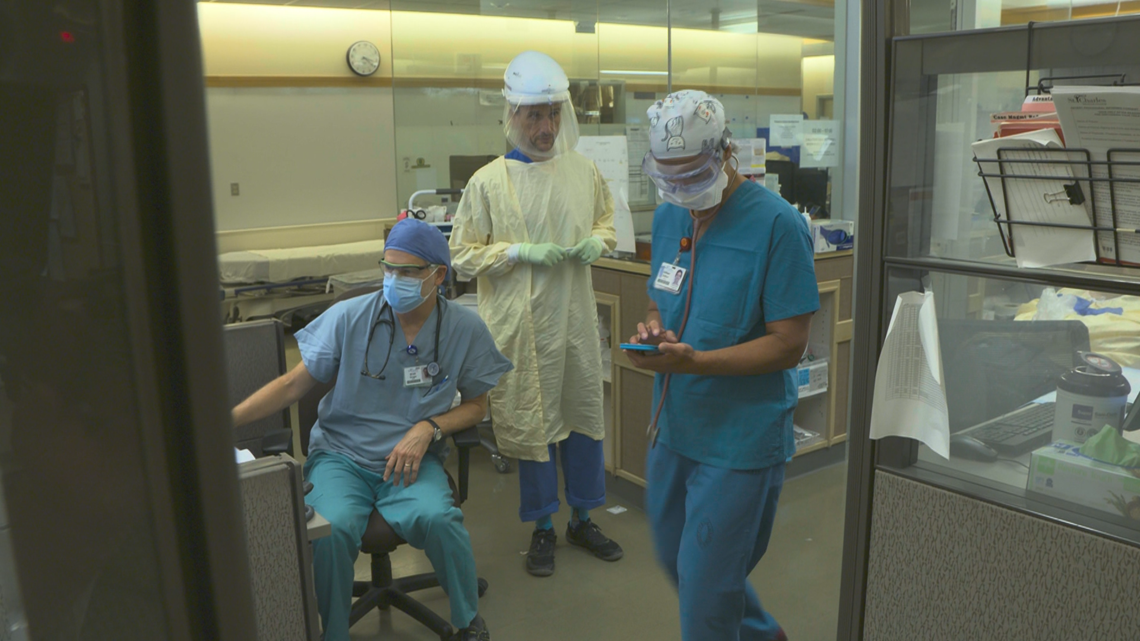
“My job, my oath is to help people. But there’s limits to that, and I can’t help people that are already coming in sick with COVID. I can’t do too much for them anymore,” she said.
The frustration and anger has reached a level where many are willing to say publicly what they’ve been thinking privately for a long time.
Dr. DeMeester now looks differently at people she sees refusing to wear a mask.
“It’s hard. I walk around grocery stores looking at people and wondering what they’ll look like when they get in the ICU. It’s pretty difficult to deal with.”
Health care professionals never expected their profession to take them to a place where they lose empathy for their patients, but some now find themselves in that exact place. Despite their years of training, some wonder if it is time to try something else.
Dr. DeMeester was asked if she’s thought about leaving medicine.
“Yeah,” she said. “I think everyone’s probably thought about getting out right now."
"We just have to stand by and watch it happen"
With even more patients expected in the coming weeks, the already-dire situation could get worse. It's something nurse Monica Schulz dreads.
“I expect this wave to be horrific. I think this will be the worst one we’ve had. I think the staff is preparing themselves mentally for that — knowing that it's coming. It's kind of like watching the airplane crash. There’s nothing you can do to stop it. That’s how I feel about this — the big 737 is crashing, we just have to stand by and watch it happen,” she said.
In the meantime, the current crisis is bad enough.

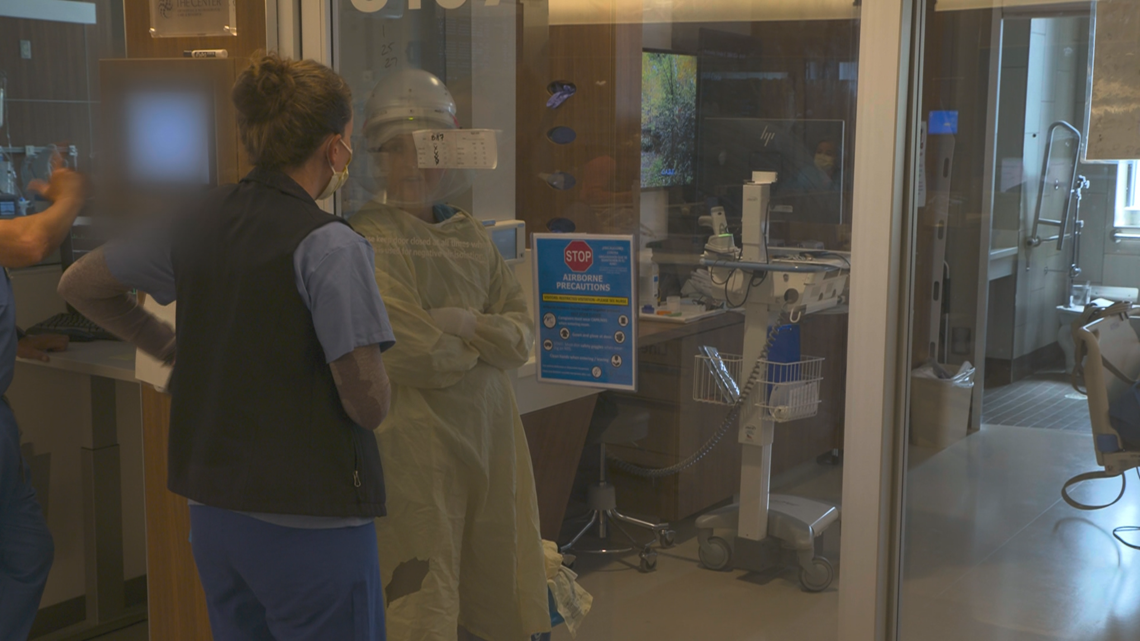
Back in the ICU, at the room of the woman in her 50s, a nurse practitioner on the outside of the glass shouts to another medical worker on the inside.
“What’s the nitric at? What’s the nitric at? The nitric oxide? It's 40?” she asks.
“No, it's at 20. It’s at 20. Forty didn’t make a difference,” comes a muffled response from inside the air purifying helmet.
Schulz knows those numbers are a bad sign.
“We have three patients that are doing very poorly this afternoon. I expect that probably none of them will make it through the night,” she said.
By 7 p.m., both the woman in her 50s and another patient in the ICU died from COVID-related causes.

